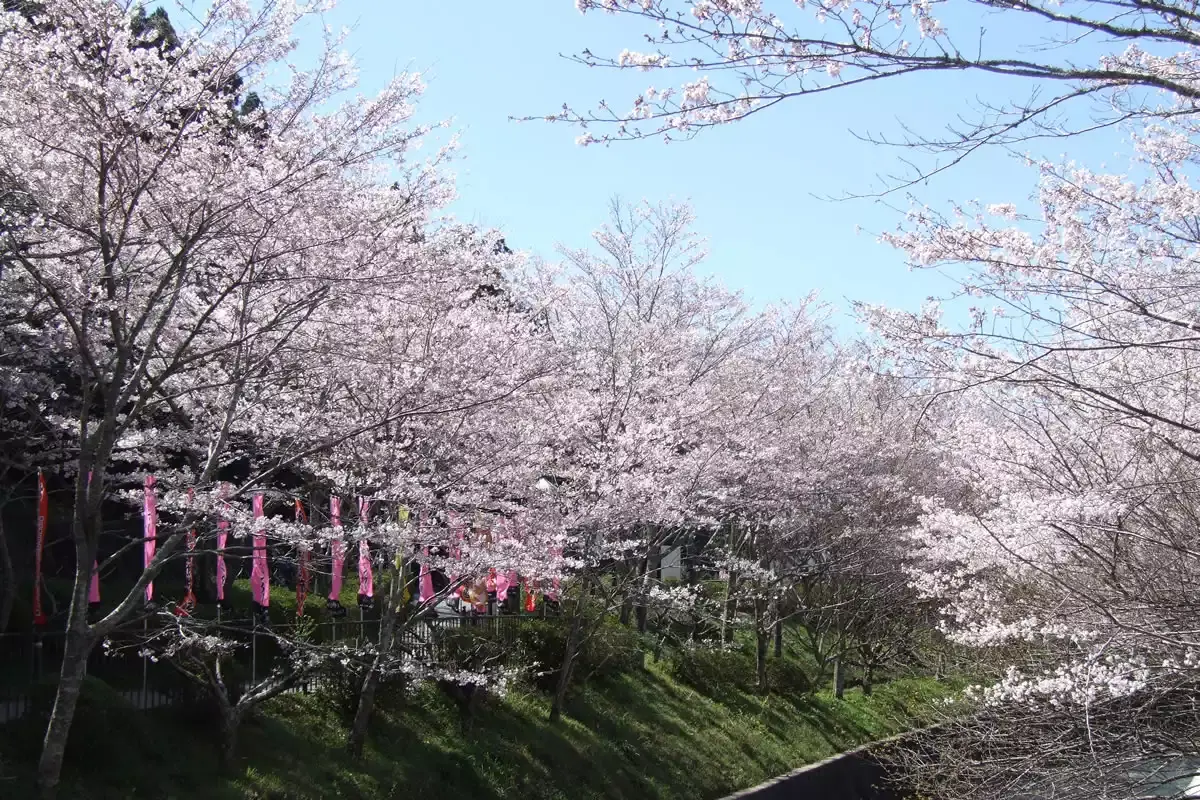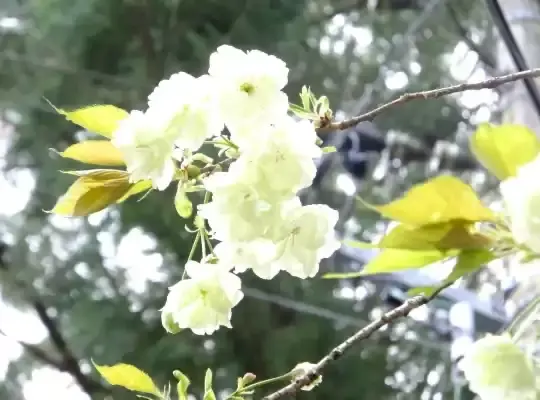


A Guide to the Jinja Grounds in Each Season
Guide for the Jinja Grounds in each season
春
The cherry trees that line the Miya River in the jinja grounds are a magnificent sight when in bloom, and in this season you can bask in the glories of spring.
In late March the cherry trees in the grounds begin to blossom, and you can see many varieties, including shidare-zakura (枝垂れ桜: weeping cherry) and taki-zakura (滝桜: waterfall cherry). The grounds also boast some unusual varieties, such as gyoikō (御衣黄), with green flowers, and kiku-zakura (菊桜: chrysanthemum sakura), with many petals on each flower.
The Cherry Blossom Festival is held every year in early April, and attracts large crowds.
Spring
The cherry blossoms along the Miya River in the jinja grounds symbolise the glory of spring.
Early Summer
The Ichinomiya Iris Garden, which covers over 2,000 square metres, is planted with about 80,000 irises of 80 varieites. Irises bloom throughout the season, from late May to early June, at different times depending on the variety.
Admission is ¥300 for junior high school students and older, and free for elementary school students and younger. Opening hours are from 9 am to 5 pm on weekdays, and 8:30 am to 5 pm on weekends. The opening and closing dates of the garden vary depending on when the irises flower in a particular year, and so they are announced separately every year. While the gardens are open, irises are available for sale at ¥1,000 each (five to six buds per plant).
The Iris Garden captures the feel of early summer
Admission is 300 yen for junior high school students and older, and free for elementary school students and younger.
Opening hours are from 9:00 a.m. to 5:00 p.m. on weekdays and from 8:30 a.m. to 5:00 p.m. on Saturdays and Sundays.
The opening and closing dates, as well as the flowering conditions, vary from year to year.We announce the expected starting flowering date by an information page.
During this period, iris plants are available for sale for 1,000 yen per plant (5-6 buds).
Between April and June
Flowers of the Sacred Garden — from new leaves to the season of blossoms
The striking reddish-purple flowers of miyama-tsutsuji, which grows wild in the jinja grounds, make a strong impression on visitors.
Best season: April to June
Rhododendrons are one type of flowering tree, and were first introduced to the West from China by plant hunters in the 19th century. The splendid blooms astonished everyone, and over 5000 hybrid varieties were created.
Best season: April to May
Iris japonica is a variety of iris with distinctive whitish-purple flowers that grow in clusters. It is a perennial that prefers shady and damp areas.
It can be seen throughout the jinja grounds, but especially along the right bank of the upper reaches of the Miya River, where it blooms beautifully at the bases of the cedar trees along the footpath.
Best season: End of April to June
Summer
The pleasant breezes and fresh greens of this season enfold the grounds in the comforting embrace of abundant nature. The Miya River flowing through the grounds becomes a verdant tunnel through the trees.
At this time of year you can see not only many flowers, but also many kinds of wild birds, making it an ideal spot for nature lovers. The vigorous plants fill the grounds with a sense of vitality and energy.
Best season: May to August
Fresh greenery fills the area with vitality
Autumn
The autumn tapestry of red leaves along the Miya River in the "Little Kyoto" of Tōtōmi
Since ancient times, Japanese people have appreciated the changing colours of autumn just as much as the cherry blossoms of spring.
When the time of the autumn tapestry comes, the leaves in the jinja grounds turn red in waves.
The Miya River completely changes from the rich green of summer to the brilliant red of autumn.
A path runs along the upper reaches of the Miya River into the inner reaches of the jinja grounds, and it is a poprular route for people strolling and viewing the autumn leaves.
The area is dotted with small bridges that offer beautiful views, and the area around the Taiko Bridge by the jinja buildings is a particularly popular spot.
Best season: November to December
The jinja grounds are transformed by each of spring, summer, autumn and winter.
Each season has its own unique beauty.
























